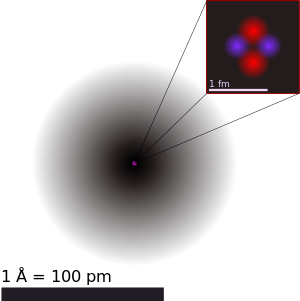SONIC BOOM
Total Pageviews
Sunday, February 6, 2011
Thursday, February 3, 2011
NASA DISCOVERED NEW SOLAR SYSTEM...................
.Scientists with NASA's Kepler mission announced Wednesday that they had identified more than 1,200 likely new planets in the past year - a revolutionary development in the quest to understand what lies beyond our solar system
http://www.washingtonpost.com/wp-dyn/content/video/2011/02/02/VI2011020205987.html
http://in.news.yahoo.com/video/itn_worldnews_new-5127647/nasa-discovers-new-solar-system-24055318.html
http://www.washingtonpost.com/wp-dyn/content/video/2011/02/02/VI2011020205987.html
http://in.news.yahoo.com/video/itn_worldnews_new-5127647/nasa-discovers-new-solar-system-24055318.html
Wednesday, February 2, 2011
BASIC LAW OF PHYSICS....................NO MATTER CAN TRAVEL FASTER THAN LIGHT...ITS BASIC LAW OF UNIVERSE...
Stephen Hawking says, 'time travel is possible'
----TIME TRAVEL CAN HAPPEN BUT WITHIN THE .BASIC LAW OF UNIVESRE..
Professor Stephen Hawking has stepped forward and he believes that he has at least in theory figured out a way to that would make time travel possible.
Professor Stephen Hawking has come forward to explain that in theory he believes that time travel is possible. The key is getting a space craft to build up speed so it is traveling at the speed of light. What is not possible is going backwards in time, only forwards
Read more: http://www.digitaljournal.com/article/291529#ixzz1CoeNrHQc
A BASIC TIME MACHINE FIRST TIME EVER WATCH IT.............................................BASED ON.EINSTIEN PRICIPLE
BASIC TIME MACHINE....................................BY DR. RONALD!!!!
ATOMIC COLLISION.......
The nucleus is the very dense region consisting of nucleons (protons and neutrons) at the center of an atom. Almost all of the mass in an atom is made up from the protons and neutrons in the nucleus, with a very small contribution from the orbiting electrons..............
The diameter of the nucleus is in the range of 1.75 fm (1.75×10−15 m) for hydrogen (the diameter of a single proton)[1] to about15 fm for the heaviest atoms, such as uranium. These dimensions are much smaller than the diameter of the atom itself (nucleus + electronic cloud), by a factor of about 23,000 (uranium) to about 145,000 (hydrogen).
ANGSTORM.................
 A figurative depiction of the helium-4 atom. In the nucleus, the two protons are shown in red and neutrons blue. This depiction shows the particles as separate, whereas in an actual helium atom, the protons are superimposed in space and most likely found at the very center of the nucleus, and the same is true of the two neutrons. Thus all four particles are most likely found in exactly the same space. Classical images of separate particles thus fail to model known charge distributions in very small nuclei
A figurative depiction of the helium-4 atom. In the nucleus, the two protons are shown in red and neutrons blue. This depiction shows the particles as separate, whereas in an actual helium atom, the protons are superimposed in space and most likely found at the very center of the nucleus, and the same is true of the two neutrons. Thus all four particles are most likely found in exactly the same space. Classical images of separate particles thus fail to model known charge distributions in very small nuclei
The diameter of the nucleus is in the range of 1.75 fm (1.75×10−15 m) for hydrogen (the diameter of a single proton)[1] to about15 fm for the heaviest atoms, such as uranium. These dimensions are much smaller than the diameter of the atom itself (nucleus + electronic cloud), by a factor of about 23,000 (uranium) to about 145,000 (hydrogen).
ANGSTORM.................
 A figurative depiction of the helium-4 atom. In the nucleus, the two protons are shown in red and neutrons blue. This depiction shows the particles as separate, whereas in an actual helium atom, the protons are superimposed in space and most likely found at the very center of the nucleus, and the same is true of the two neutrons. Thus all four particles are most likely found in exactly the same space. Classical images of separate particles thus fail to model known charge distributions in very small nuclei
A figurative depiction of the helium-4 atom. In the nucleus, the two protons are shown in red and neutrons blue. This depiction shows the particles as separate, whereas in an actual helium atom, the protons are superimposed in space and most likely found at the very center of the nucleus, and the same is true of the two neutrons. Thus all four particles are most likely found in exactly the same space. Classical images of separate particles thus fail to model known charge distributions in very small nuclei
Subscribe to:
Posts (Atom)













